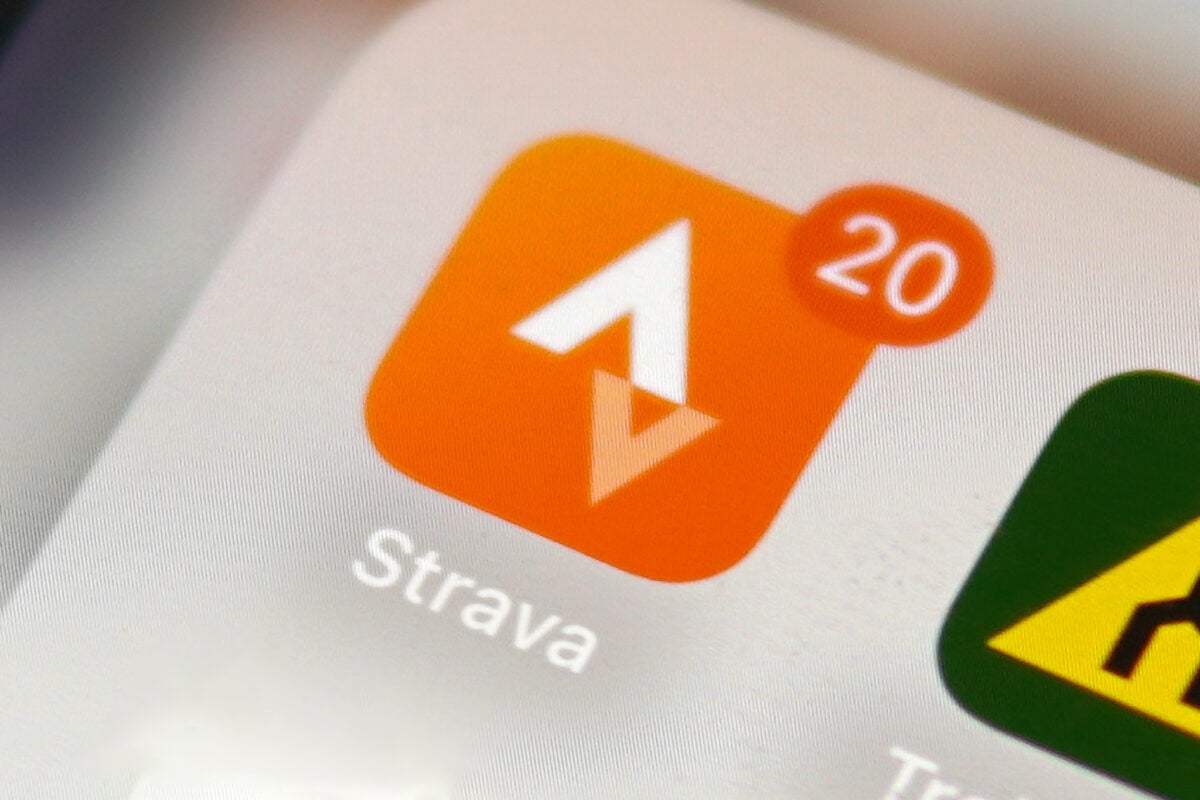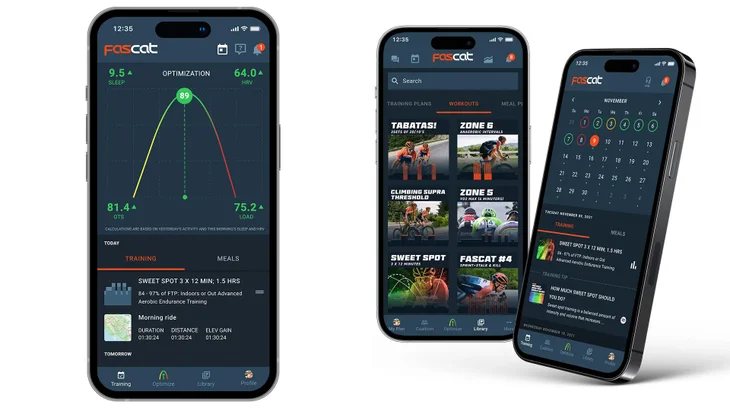
Strava API Update Means Changes to the Fitness App Ecosystem
“], “filter”: { “nextExceptions”: “img, blockquote, div”, “nextContainsExceptions”: “img, blockquote, a.btn, a.o-button”} }”>
Strava is making significant changes to the Strava API and you might have missed it. The email users got yesterday morning felt like a routine privacy update and didn’t appear to be big deal. It actually was a big deal though. Here’s what it said:
“We’re reaching out to inform you of a change that affects how third-party apps connected to Strava may display certain information. This update, effective on November 11th, is part of our commitment to privacy and transparency across all connected apps and devices.
Third-party apps will now only be allowed to display Strava activity data related to a specific user to that user. Partners will be required to update their app within 30 days of November 11th to align with this new standard.
What This Means for You
You’ll continue to have access to your personal Strava activity data within your connected apps, but you may notice differences in how this data appears on platforms that need to align with our updated privacy terms.
We understand these changes can be an adjustment, and we’re here to help. Read our full post for more details on this update and its impact.
Thank you for being a valued member of the Strava community.
Best, The Strava Team”
More Details on Strava’s API Changes
Clicking through provides a few more details:
As a part of our commitment to privacy and transparency, we want to keep our community informed about important updates on how Strava data can be displayed, accessed, and used by third-party apps. If you have granted a third-party app access to your activity data, they will no longer be able to display it within their surfaces to any user other than yourself. This update to our API Agreement went into effect recently and partners will have a month to update their apps to comply with these new standards.
Here’s everything you need to know.
What’s changing and why?
- Stronger Data Privacy Standards:
Third-party apps are no longer able to display your Strava activity data on their surfaces to other users.
We’re updating our terms to explicitly prohibit third parties from using any data obtained via Strava’s API in artificial intelligence models or other similar applications.
- Protecting the Strava Experience:
We’re adding new terms to safeguard Strava’s experience. We’re adding terms that ask third-party apps to maintain a design that complements Strava’s distinctive look and feel, rather than replicating it. This change helps ensure users can clearly distinguish between Strava and third-party platforms.
- What these updates mean for you
You’ll still have access to your personal Strava data across apps connected to Strava, but you may notice changes in how that data appears or is used by some apps as they adjust to the new privacy terms. These updates are part of our continued focus on maintaining strict privacy standards for your data.
- Why are we making this change now?
Strava’s open platform enables third-party developers to create tools that enrich your fitness journey. As our community grows and technology—especially AI—evolves, we’re proactively refining our terms to stay ahead of advancements in data technology, helping to ensure we continue to uphold high standards of data security and privacy for our users. These updates are designed to give you greater control and transparency over your data, helping to ensure that you continue to enjoy a secure, high-quality experience with Strava and its connected apps and devices.
Note: Per our Community Guidelines and Guidelines to Ideas, posts requesting or attempting to have Strava revert business decisions will not be permitted.

What is changing for cyclists?
For many users, Strava is an important data platform. One of the greatest strengths the service offered was ubiquitous data syncing to every service imaginable. It seems that for many users, and the services they rely on, that will disappear on November 11.
Understanding what that could mean might be best served with an example. Veloviewer is a small service that started offering “new insights, engaging visualisations, motivational goals and in-depth analysis to your Strava data” in 2017. It’s not a large brand but it exists to display your Strava activity data to other users. Which now appears to be a direct violation of the updated Strava API.
For other small services, it’s less clear. Statshunter also uses Strava data, but it’s only displayed to the end user. Then there’s Epic Ride Weather that pulls your strava data to show weather predictions. Are these both services that stand to remain unaffected?
On the flip side of that, it would also seem that any service allowing a coach to view your data pulled from Strava would be off the table. That potentially falls under “Third-party apps are no longer able to display your Strava activity data on their surfaces to other users.”
The bigger point is likely the second on the list: limiting the use of AI. That’s because training data is ripe for insights through advanced data analysis and could be affected depending on someone’s interpretation of AI. Almost every utility in the space is expanding in that direction. I believe this change will limit the use of data as it comes out of Strava for many coaching services.
I reached out to Strava directly to clarify some of these nuances. I asked if the updated terms of the Strava API effectively disable a wide range of third party services from using data sent via Strava? And if so, is that intentional? Strava has not responded to either question as of publishing.
Note that there’s also no discussion in the Strava community hub. The last line makes it clear that isn’t allowed, specifically stating that “posts requesting or attempting to have Strava revert business decisions will not be permitted.”

How are other companies responding?
Many of the brands most affected by this are small. Services that fill small and specific niches for end users are likely to disappear from the Strava list of approved apps. Many of these companies are little more than a person with an idea.
The larger companies in the space seem to be responding in a couple of ways. There’s those who analyze data from Strava and there’s those who provide competing services. Falling into the first category are brands like FasCat Coaching who’s founder and CEO stated, “In light of Strava’s recent decision to limit third-party app API access, FasCat Coaching is reaffirming its commitment to innovation and athlete-first solutions. Unlike many in the fitness tech space, the CoachCat app is not dependent on Strava’s API to access user activity or wearable data.
From the outset, CoachCat intentionally developed direct integrations with leading fitness and wearable devices—including Wahoo, Zwift, Rouvy, Garmin, Apple Watch, Hammerhead, Whoop, and Oura. This strategic choice not only ensures continuity for our athletes but also allows us to maintain greater control of data, enabling us to deliver a superior, personalized coaching experience.
FasCat Founder, CEO and CoachCat inventor says, ‘By connecting directly with the devices athletes rely on, we’re able to offer a more robust, seamless, and reliable coaching solution.’
FasCat Coaching’s leadership in data-driven performance and AI-powered coaching underscores its adaptability in a rapidly evolving industry. Recognizing that data is the rocket fuel for AI, FasCat aims to leverage every data point athletes generate—from wearable devices, virtual training platforms and industry leading bike computers —to deliver world-class personalized insights. This commitment to harnessing data and innovation not only ensures athletes receive unparalleled coaching experiences but also solidifies FasCat’s position as a leader in AI coaching software and a trusted partner in cycling and endurance sports training.”
Meanwhile, TrainerRoad has a forum post covering the change where owner and CEO Nate Pearson states, “We’re still understanding the full implications; but for now: Good news – We’ve been syncing Garmin Connect for a long while now. When we have both a GC and Strava ride file, we de-dupe them and use the GC .FIT file for processing/training/displaying. This is because Strava edits the data and takes a few things out. More good news – We were already working on pulling rides from Zwift directly into TrainerRoad. Even more good news – We had direct pulling from Wahoo on the roadmap, but now that’s obviously moved up to be worked in parallel with the Zwift integration. For now, I recommend Garmin users make sure they have Garmin Connect synced. How to Sync your Garmin Connect Data to TrainerRoad Step 1 – Go to https://www.trainerroad.com/app/profile/sync Step 2 – Click Connect [image] Step 3 – You’re done!”
Other brands including Xert and Trainingpeaks did not share an official statement however both made it clear that the platforms were open. Xert integrates with Garmin and Zwift directly while TrainingPeaks provided a link to a page which states “Connect and sync your workout data with TrainingPeaks using thousands of compatible devices and apps from Garmin, Apple, Wahoo, and more.”
Of course to some extent any company that provides analysis could be seen as a competitor to Strava. The analysis portion of the Strava service is new though. On the other side of the ecosystem are the companies who are in direct competition with the core ride tracking features that Strava started with.
Kevin Prentice the Business Operations Director, with RidewithGPS provided a statement saying, “Ride with GPS is here to serve the riding community. Building a great product for that community requires data from rides, contributed by the creator and owner of that data: the person out there on their bike. The community trusts us to use their data to build innovative tools that further their cycling endeavors–and we don’t take this for granted. Our belief is this data should not only be easily accessible, but also easily portable to any service they want to use at any time.
We are committed to continuing to support an open and feature-rich API. From our early days to now, much of our core functionality has only been possible thanks to the openness of partners like Garmin and Wahoo, an openness that has brought cyclists a rich ecosystem of useful products. We look forward to continuing to work with everyone serving cyclists, including competitors, to do our part to get you on better rides, more often.
Since 2007, we’ve humbly served the cycling community, and we’re in it for the long haul. We are committed to safeguarding our community’s data and ensuring our platform remains a secure, trusted, and open home for it. This will not change, and we welcome anyone onto our platform who wants both a home for their data, and easy access to it to use in other products and services.”
Outside Interactive, my employer, is also a player in this space with ownership of MapMyRide, Trailforks, and Gaia GPS. Founder and CEO Robin Thurston stated “For Outside and the services under that umbrella our intention has always been to allow the consumer to control not only what they can do with their data but also who they can share data with. Our goal has been to allow users to use their data in an open and free way and that our platform is open. We aren’t going to limit links, or device integrations, and we are not going to hinder people from using their data how they believe it should be used.”



